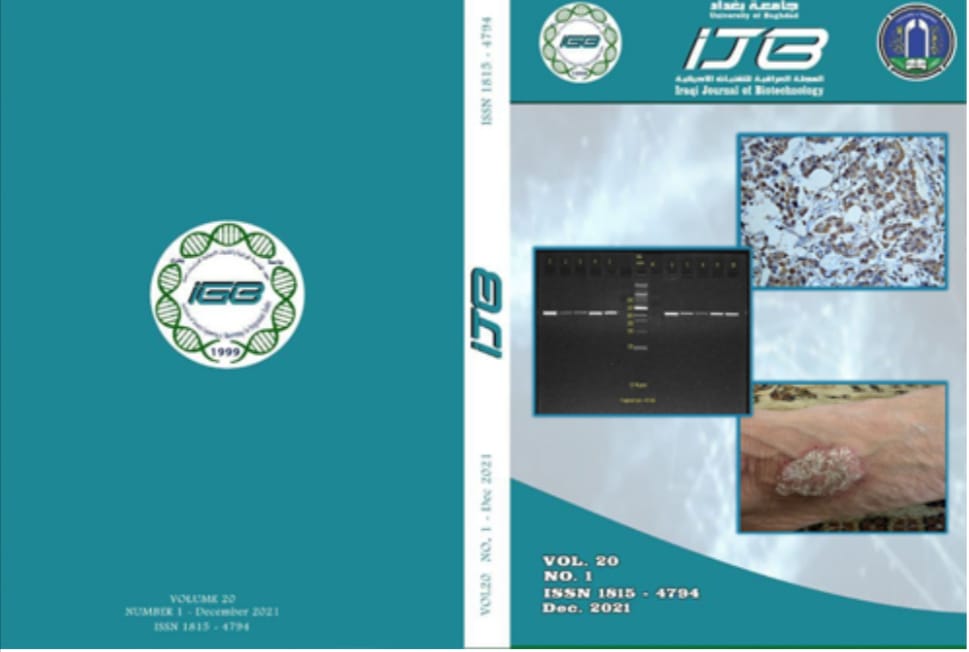Molecular and Nanotechnical Study for Antibiofilm Formation and CsuE Gene Expression Activities of Synthesized Iron Oxide Nanoparticles Against Multidrug-Resistant Acinetobacter baumannii Isolates
Abstract
This study aimed to investigate the influence of synthesis of Iron Oxide Nanoparticles (Fe3O4NPs) by co-precipitation method on biofilm formation and CsuE gene expression in multidrug resistance Acinetobacter baumannii (MDRA.b) which represents one of the important causing agents of nosocomial infection. A. baumannii isolates used in current study and isolates from different clinical sources (wounds, burns, urine, sputum, blood and throat) that able to produce strong biofilm. Synthesis and characterisation the physical-chemical nature of Fe3O4 NPs was carried out using UV-visible spectrophotometer, fourier transform infrared (FT-IR), X-ray diffraction (XRD), Atomic force microscope (AFM) and scanning electron microscope (SEM). Results show that they were very fine crystalline sizes reaching to 11±1 nm by XRD ,with a mostly spherical in shape and average of nanoparticles size between (40- 47) nm by SEM and AFM, respectively. Minimum inhibitory concentration (MIC) and sub-MIC test of Fe3O4 NPs at concentrations (15.75 to 2000) μg/ml against A.baumannii isolates had been determined using tube broth method measured by optical densities values at 630 nm. The results of the experiment of the best sub-MIC with concentration of Fe3O4 NPs 125μg/ml showed a significant difference at p˃0.05 the anti-biofilms inhibitory on polystyrene surface of microtiter plates for the bacteria isolate under study. Biofilm formation CsuE gene expression was investigated by using RT-qPCR technique with reference 16SrRNA gene before and after treatment with Fe3O4 NPs. The results showed a significant difference at p˃0.05 in Cycle threshold (Ct) values for CsuE gene expression of the isolates. The study concludes that the synthesized magnetic Fe3O4 NPs with 125µg/ml gave excellent antibiofilm activities and inhibitory efficiency against A.baumannii isolates and the potentiate to down regulate of gene expression fold for biofilm formation encoded by CsuE gene of A.baumannii leading as a result to have low biofilm production.


